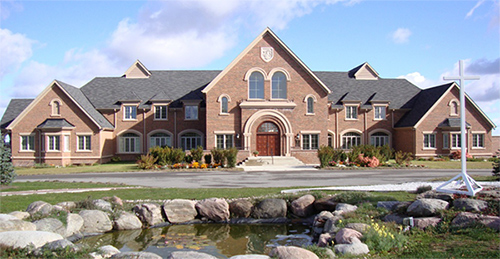Carmel in Hebrew means a beautiful fertile garden. It refers to Mount Carmel in the Holy Land, where the first Carmelites, hermits of the mid-13th century, lived their life with the Prophet Elijah and Mary, the Mother of Jesus, as their contemplative ideals of following Jesus Christ. Spiritually, it refers to the place where free from all distractions, like in the wilderness, a soul lured by the hidden God, seek for the desired union with Him.
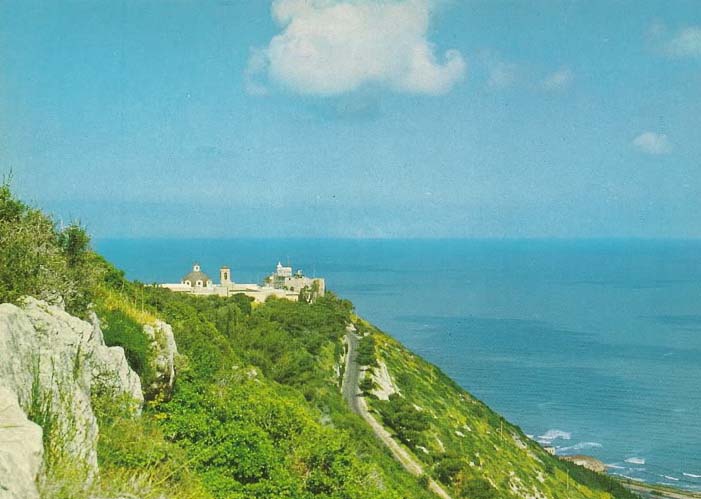
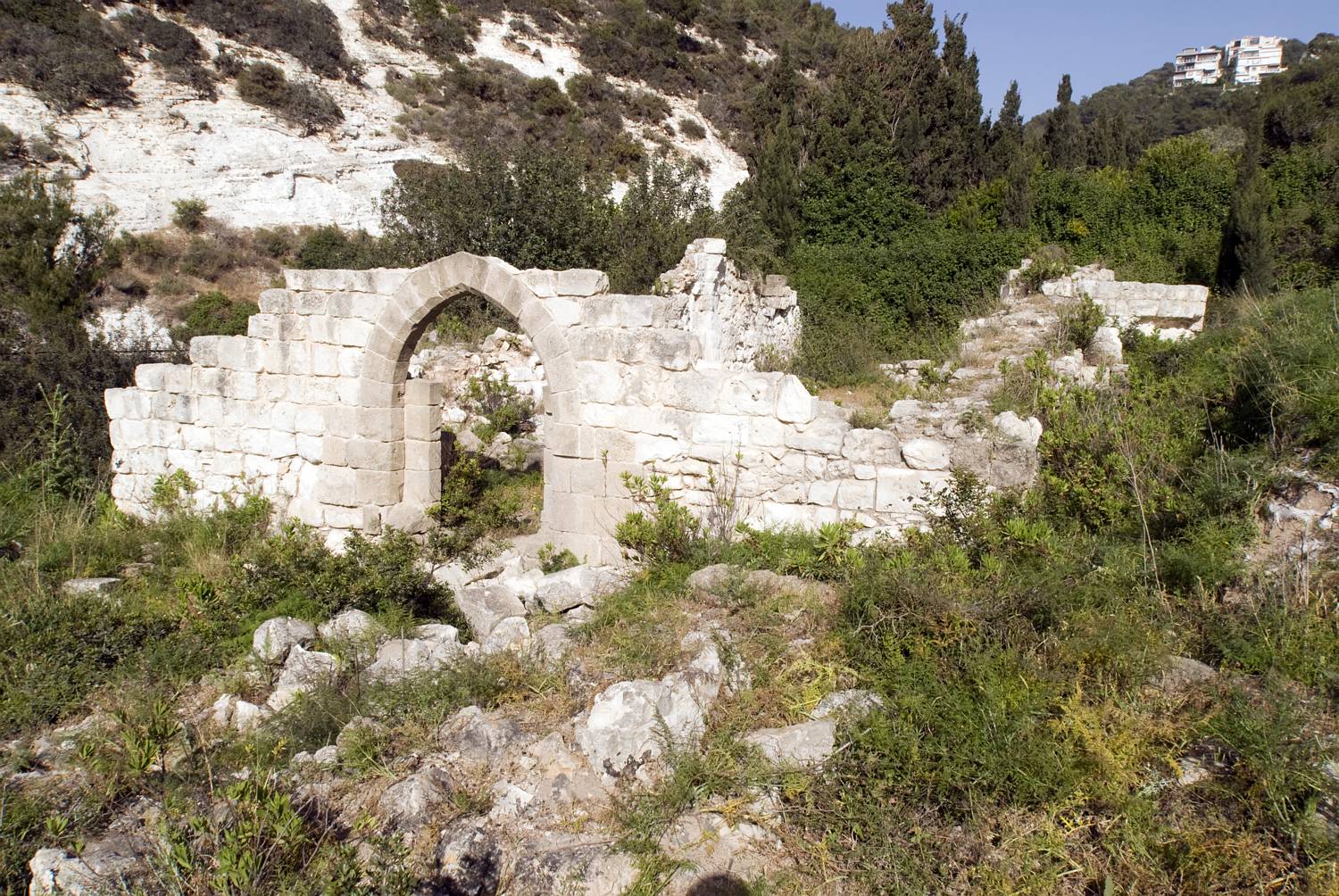
- Mount Carmel, Holy Land
Our story is traced back to the 9th century BC, when the very powerful prophet Elijah (his name means “Yahweh is my God”) appeared in Israel. He is a Man of God who was able to raise the dead, bring down fire from the sky, bring forth and end a famine, and ascend into heaven in a whirlwind.
At that time the Kingdom of Israel which was united under King Solomon was divided into the northern Kingdom of Israel and the southern Kingdom of Judah where the worship of the Israelite religion continued in the temple of Jerusalem. King Ahab of the northern Kingdom of Israel did not follow the Law of Moses and worshipped false gods. Elijah defended the worship of Yahweh over that of the more popular Baal. He challenged the people of Israel and King Ahab to choose to worship the one true God. In a contest of powers between Yahweh and Baal on Mount Carmel, two altars were built, one for Baal and one for Yahweh. Elijah and the priests of Baal were to pray for fire from heaven to light the sacrifice on their altar. At the end only Elijah's offering was consumed by fire from heaven, attesting that Yahweh is the one true God.
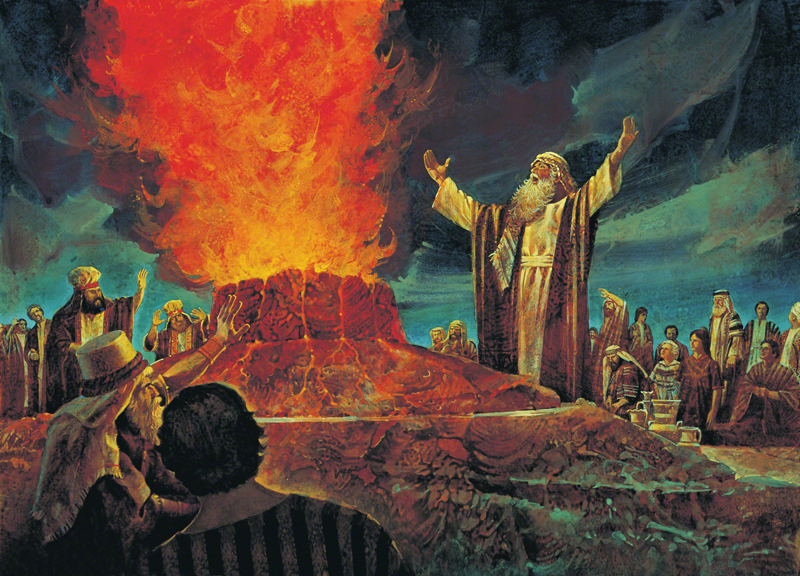
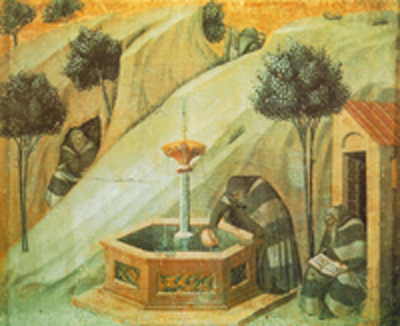
In the early 13th century, crusaders came to Mount Carmel to live a life of prayer and penance. They were the first Carmelites. They lived near to the Elijah’s spring and made the Prophet Elijah and the Blessed Virgin Mary their contemplative ideals of following Jesus Christ. They were mostly lay people, neither priests nor monks, who desired to live an unofficial life of Gospel poverty, prayer and penance and to return the church from wealth, power and pomp to apostolic simplicity and holiness. These first hermits dedicated to the Virgin Mary a little chapel and called themselves “Brothers of the Blessed Virgin Mary of Mount Carmel.” Mary, the Mother of Jesus was their Mother, Sister and Patron due to the inspiration and example of her life, plus the powerful protection and the many favors she bestowed on them. Sometime between 1206 and 1214, they received a rule of life from St. Albert, the Patriarch of Jerusalem who brought these hermits together into a community.
- Europe
Hostile situation in the Holy Land continued in the 13th century and the hermits sought refuge in Europe. They adapted their life to the new setting in Europe. In 1247, Pope Innocent IV approved the formula of life written by Albert of Jerusalem as the Carmelite Rule modifying it to suit their new situation. This is the Rule which all Carmelites worldwide observe to this day. Since then, the Carmelites are considered as religious of the Carmelite Order and are placed at the service of the Church.
The Rule exhorts the Carmelites to a life of allegiance to Jesus Christ, through meditating on the law of the Lord (i.e. Scriptures) day and night. They are to be clothed with the spiritual armor, and live in fraternal communion with daily celebration of the Eucharist. Each occupying their own cell, the hermits live a life of prayer in silent work and penance, rooted in faith, hope and love, and God's will is discerned through dialogue and obedience to the superior.
As time went on, the spirit of the rule was not being observed. After numerous unsuccessful attempts for reform throughout the centuries, God ordained a 16th century Spanish woman, St. Teresa of Jesus, to renew the Order.
- Spain – Belgium - Worldwide
Teresa was a woman who lived in a tumultuous time. With great courage and total dependence on God, in 1562, she founded the first Discalced Carmel in Avila under the patronage of St. Joseph. “Discalced” literally means going bare foot, to signify the reformed spirit of the members. This brought forth the practice of Carmelites wearing sandals. With insights from God, she spoke and wrote against the society of her day which was obsessed with honor, suspicious of women’s role in the Church and the practice of mental prayer. She wanted a world founded on gospel values and people were treated equally and everyone walked in truth. She simply called herself Teresa of Jesus and relinquished her aristocratic title. Though without formal schooling, her writings on prayer and spirituality were recognized as some of the greatest classics of the Church.
St. Teresa’s community was founded with the purpose to help Jesus Christ whose Church was being torn apart by the Reformation. The nuns were to be the intimate friends of Jesus and dedicate their contemplative lives of prayer for the unity and holiness of the Church. They especially pray for the sanctification and divine protection of the clergy whose holiness has a great impact on the advancement of God’s kingdom on earth.
The Carmel that she founded is a small community, in the style with a family atmosphere, where all the sisters are equal, and all are friends with each other and with Christ. It is a simple but austere life, but humane and joyous. The liturgies are simple so that there was more time for contemplative prayer. They live inside the enclosure to avoid distractions that may dissipate their spiritual lives and the fruits of their prayer.
When Teresa learned that millions in Latin America had not heard of the Gospel, she desired to found more communities to spread the Christian faith. In 1567 she received permission to establish more foundations of nuns and of friars, who were to live the same contemplative life as the nuns. These friars could support and guide the nuns and perform other apostolic and missionary work.
While making her second foundation she met a young, newly ordained Carmelite friar John of the Cross. He was about to leave the Order to join the Carthusians. Teresa recruited him for the reform of the friars. With his help, the Order of Discalced Carmelites began to take shape. It was first formed as a separate province within the Carmelite Order. It was only after immense trials and sufferings, like birth pangs, that the Discalced Carmelite Order (also known as “Teresian Carmel”) became an independent Order in 1590.
When our Holy Mother St. Teresa died in 1582, she had established seventeen monasteries of nuns and fifteen of the friars. The Order spread rapidly to other parts of Europe. In 1612, her personal nurse and secretary, Blessed Anne of St. Bartholomew established the first Teresian Carmel in Antwerp, Belgium. It was from this Carmel and its later foundations that new Carmels were founded in China and in the United States. Today the Teresian Carmelite friars, nuns and lay people who share the same spirit are found throughout the world, serving the Church with our particular spiritual gifts.
- China – Hong Kong
Mother Therese was the Belgian foundress of the Hong Kong Carmel. She first arrived at Canton, China with her three nuns from Belgium on May 4, 1931. In the same year they were visited by two young and well educated ladies, Cecilia and Agnes, who were friends to each other. They both were attracted to this life and entered Carmel that year. It was an emotional event to Mother Therese to receive her first postulant Cecilia, for when she bid farewell to her Reverend Mother Cecilia back in Belgium, she was hoping that her first daughter in China would have the name Cecilia.
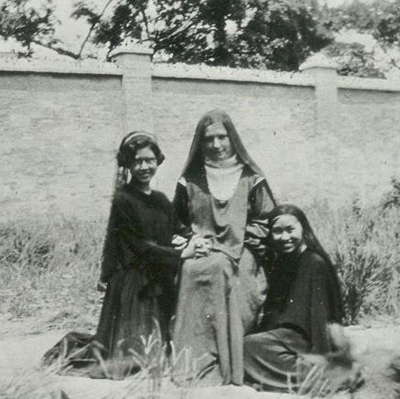
The young Carmel was flourishing with vocations. In 1933, it was moved to Hong Kong and the permanent Monastery at Hong Kong's Stanley Bay was built in 1937.
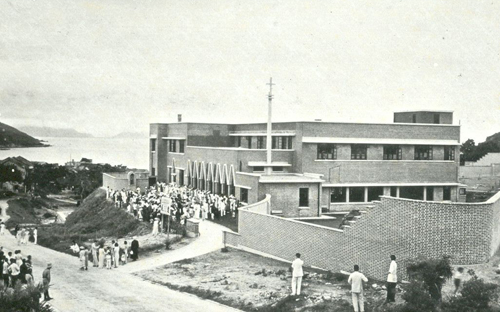
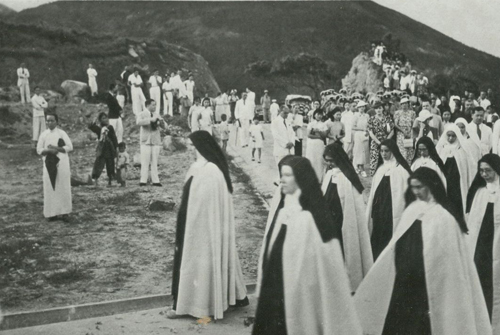
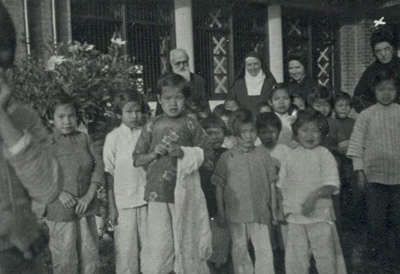
Under the patronage and protection of the Infant Jesus, the community miraculously survived during World War II. In January 1942 the Japanese expanded their occupation in China to Hong Kong. On Christmas Eve that year, the Italian Canossian Sisters and their children took refuge inside the Hong Kong Carmel when their orphanage was in danger of catching fire. The rule of enclosure was lifted up till the end of the war to accommodate their presence. Since the Canossian sisters were Italians and Italy was an ally of Japan, they and the children protected the Carmelites from the harm of the Japanese soldiers who walked in and out freely of the monastery.
The Hong Kong Carmel continued to flourish with many vocations. Our Mother Foundresses Emmanuel of the Sacred Heart and Sister Mary of the Trinity entered Hong Kong Carmel in 1939 and 1946 respectively. While in Hong Kong, they helped to prepare the founding of the new Carmels in Macao (1941) and in Hawaii (1973). In 1991 the Macao Carmel moved to Canada and now settled in Spruce Grove, Alberta, Canada. With undaunting spirit and faith like Abraham, at the advance age of the seventies, in 1992, they led the new foundation in Canada.
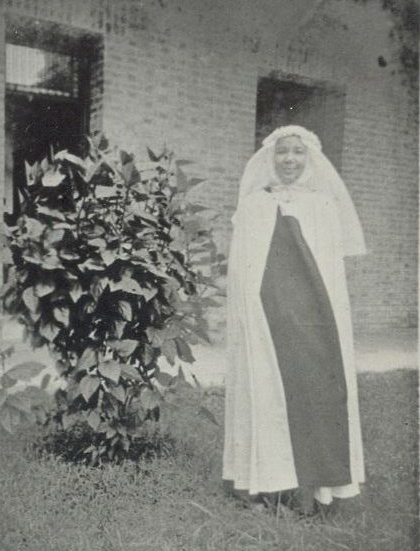
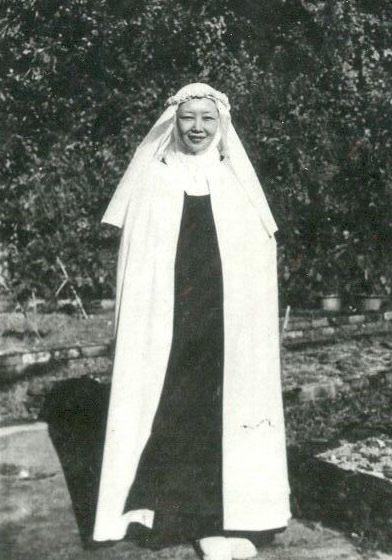
- Canada: from Markham to Zephyr
The story of our Carmel began in the 1980s. Many friends of the Hong Kong Carmel moved to foreign countries like Canada. They requested the Hong Kong Carmel to make a foundation in Canada. After careful consideration and prayers, with the approval and well wishes of the Superior of our Order and the Bishops in Hong Kong and in Toronto, in 1990, some Hong Kong Carmelites came to Toronto to assess the feasibility of this new foundation in Canada. On April 8, 1992, Mother Emmanuel of the Sacred Heart, Sr. Mary of the Trinity, Sr. Therese of the Child Jesus and Sr. Rose arrived at in Toronto. They were assisted by In Chiu Cheng who had previously entered the Hong Kong Carmel in the 1940s, but left due to poor health during the World War II. She re-entered the new Carmel as the first postulant and resumed her religious name, Sr. Cecilia of the Immaculate Heart of Mary. Sr. Veronica of the Cross of the Hong Kong Carmel later arrived in September 1992 while Sr. Rose returned to Hong Kong. The Infant Jesus of Prague was chosen as the patron of the new Carmel in Markham, for Jesus says, "The more you honor me, the more you will be blessed!"
The new life of these Carmelites in Canada was difficult but true to the spirit of their Holy Mother, St. Teresa of Jesus, with unwavering determination, they overcame many difficulties. They made many new friends and brought much consolations to those who came to seek the spiritual support of their prayers. The priests of the Chinese Martyrs Catholic parish, who lived on the same street, celebrated daily Mass for them. The Carmelite friars of the Malta province who were then stationed in London, Ontario, also came regularly to give spiritual direction and support to the community.
In 2004, the rapid urban development in our neighborhood and the continued struggles of fitting a growing community inside our Markham house made it imminent for the building of a more spacious and permanent Carmel in another location. With the divine assistance of St. Joseph, like our Holy Mother St. Teresa, we moved into our new Carmel in Zephyr of the Uxbridge Township, on June 21, 2006. Our convent and our chapel dedicated to the Infant Jesus were solemnly consecrated by Archbishop Thomas Collins on September 8, 2007 with 28 priests and over a thousand friends.
Our new home in Zephyr, like St. Teresa's first Discalced Carmelite monastery in Avila, Spain back in the 16th century, is an altar for offering up our lives as pleasing sacrifice to God, giving him thanks, praise, honor and glory on behalf of the Church. Like the Prophet Elijah who set up an altar on Mount Carmel to contest with the false prophets of the existence of the one true God, our Carmel, atop the rolling hills of Zephyr, is a witness and a beacon to many of the Carmelite spirit of seeking the one true God, Who alone suffices. Standing before God, interceding for our brothers and sisters, it is our prayer that the Infant Jesus, who over 2000 years ago, had nowhere to lay his head, but a manger in Bethlehem, finds our Carmel a pleasing resting place where he may bring forth much blessings, love, peace and joy to the world. May our home with his presence be “a little piece of Heaven on Earth.”
